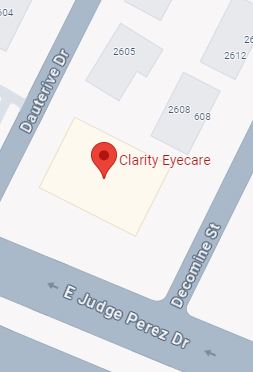Bifocal and Multifocal Contact Lenses
Choosing the Best Options for Your Eyes
If you are over 40 years old and have a difficult time seeing near objects, you may have a common age-related eye condition known as presbyopia. This is a condition that naturally occurs as we age. In many cases, if you are a patient who deals with presbyopia, you will manage it by reading everything at arm’s length. However, bifocal or multifocal (progressive) lenses can help so you no longer need to do that.
If you are not a fan of reading glasses, no worries. Bifocal and multifocal lenses are also available as soft and Rigid Gas Permeable (RGP) contact lenses.
Multifocal contact lenses are a highly popular alternative to reading glasses because they grant you some freedom and allow you to see clearly at any distance in any direction. By comparison, multifocal lens eyeglasses require you to look over your glasses if you want to look up or at a distance, making them inconvenient for those who value flexibility over anything else.
Bifocal Lenses Versus Multifocal Lenses
Bifocal lenses consist of two sections for different vision powers; one is for seeing at a distance and the other is for seeing up close. Although you can switch between the two segments, you may not be able to see clearly between them.
Multifocal lenses, on the other hand, refer to any lenses with multiple segments, including bifocals, trifocals, or progressive lenses. Non-bifocal multifocal lenses enable you to see clearly in all segments and between them so you experience constant clarity. Multifocal contact lenses are designed in two ways:
- Simultaneous vision contact lenses
- Distance vision and near vision segments are present at the same time. After a short adjustment period, your eyes will naturally be able to tell which segment they should focus on without letting the other distract them.
- Simultaneous vision lenses come in 2 designs:
- Concentric Ring: Bifocal lenses that feature a central circular area for one vision power and an outer ring for the other power (like a bulls-eye). The width of each ring is determined by the power that will be needed.
- Aspheric Design: Simulates a more natural use of eyesight. Both the distance and near vision powers are blended and located in the central area. Your eyes will learn which area they need to focus on.
- Distance vision and near vision segments are present at the same time. After a short adjustment period, your eyes will naturally be able to tell which segment they should focus on without letting the other distract them.
- Alternating/Translating sision contact lenses
- This type of lens is also divided into segments. The top segment is usually reserved for distance vision while the bottom segment is reserved for near vision. This mimics the natural movement and focus of the eyes, which look up ahead in the distance and down below when reading up close. In order to keep the contact lenses from shifting, they maintain their position by what is called a ballast, which is a portion of the lens that is thicker than the rest of it, or by flattening the bottom portion so it remains in line with the lower lid (RGP lenses)
Monovision, An Alternative To Multifocal Lenses
Monovision contact lenses utilize your dominant eye for distance vision and your non-dominant eye for near vision. This is especially recommended by our Chalmette optometrist for patients with presbyopia who cannot seem to get used to multifocal contact lenses.
When it comes to wearing monovision contact lenses, we may recommend you wear monovision lenses in both eyes, or a monovision lens in your dominant eye and a multifocal lens in the non-dominant eye. The latter is known as modified monovision. Our contact lens testing will help us determine which type of contact lenses will benefit you most.




